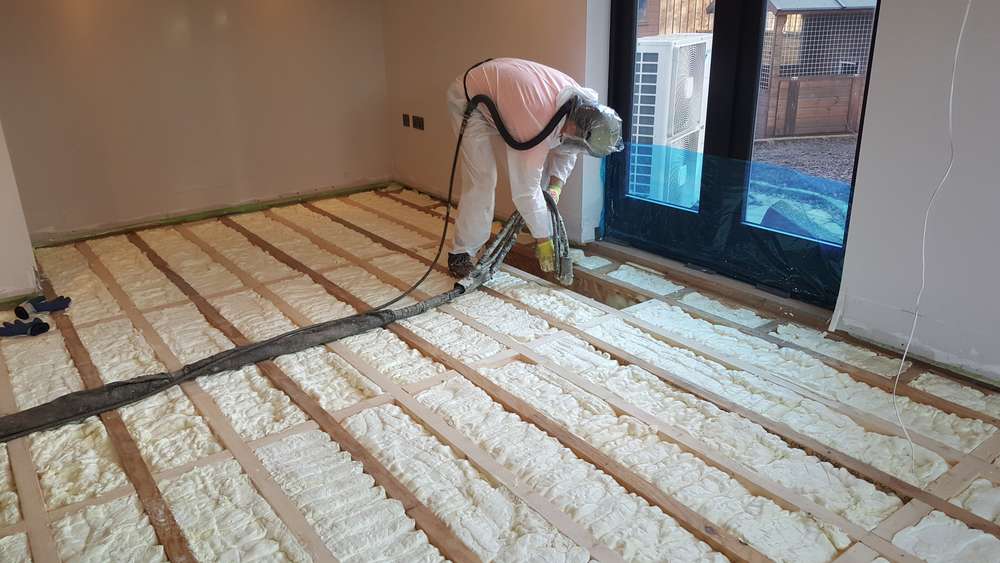Attic Spray Foam Insulation Navan
3 Bed Semi Attic Insulation Navan

Attic Insulation Navan
Spray foam works in many different conditions. Spray foam can be used on roofs, windows and attics as well underfloor heating systems and interior and external walls.
Spray foam insulation can not only keep your house warm in winter, but it will also keep you cool in summer. Because of its “Cell” structure and composition, it allows moisture-laden air to escape. This helps the house breathe.
Benefits of Spray Foam Insulation for your home
Other uses include: commercial and industrial buildings; agricultural farms houses; sheds; shipping containers; vessels; and the refrigeration industry.
It also acts as an airtight shield around the house to keep out cold wind and rain. The heat will escape from your home, unlike other insulating items on the marketplace today.


Cost Price Of Spray Foam Insulation
Spray foam insulation, which is the most effective insulation material, is undoubtedly the best. It has a higher U value than other insulating materials such as rock wool, fiberglass and cellulose.
Spray foam insulation is also a good sound barrier. Spray foam insulation reduces outside noise significantly. This is especially beneficial for companies or homes located in densely populated areas or near airports.
Insulate Your Navan Property Properly
It’s commonly used to block sound from traveling between rooms or floors. It is particularly useful in bathrooms, where the noises of flushing toilets and showers can be annoying.
It is simple to use and won’t cause any disruption to daily life.
An Irish traditional home can be insulation in one day.
Encasing the pipes and insulation reduces noise coming from under-floor or in-wall piping.

If you plan on using the loft/attic as storage space, you should lay boards above the joists. Insulation will not be thick enough if you insulate only between the joists.
It is much more effective than fibreglass, rock wool or polystyrene panels when used inside walls, roofs, floors and attics. Because of its dense composition and application process, it creates an airtight envelope. It stops sound infiltration from the outside environment such as traffic or pedestrianised streets.
It also prevents sound generated from within a building from reaching adjacent floors or the floors below them. Spray foam insulation could reduce the amount of noises generated by structures such as running showers or washing machines.
Spray foam insulation is flexible and filled with millions upon millions of microscopic air bubbles. This not only absorbs the vibrations and stops sound from passing through the floor, but also prevents sound from being transferred. Spray foam insulation reduces airborne noise transmission by sealing all cracks and crevices.
Spray foam insulation can also dampen, if not completely eliminate, sounds from floors such as water moving through pipes. It surrounds pipes securely, preventing them rattling. It also prevents hot water from flowing through the pipes, which can cause the wooded beams to creak, crackle and expand.
It also stops heat escaping from the upper floors. Lower floors become cooler which, in turn, requires more heat. Upper floors then become too hot.
If your loft is easily accessible and does not have condensation problems, insulation should be straightforward.
Uninsulated homes let 25% of their heat go through the roof. Insulating your roof, attic, and loft is a good way to reduce heat loss. It will also reduce your heating bill.
You can use mineral wool insulation rolls if you have easy access and your loft joists remain regular. The insulation begins by placing the first layer between the joists. These are the horizontal beams that form the loft’s floor. A second layer is then laid at right angles to cover and seal the joists.
You can raise the floor to get sufficient insulation. This can be done by installing timber battens along the joists or by purchasing purpose-built plastic leg that attach to the joists to support the new floor. To prevent condensation from forming on the boards’ undersides, it is important to ventilate the air gap between insulation and boards.
You should not squash the mineral wool while you place the boards on top. This will decrease its insulation value.
Insulation stops heat loss from living spaces. By making your loft space cool, you can prevent damp or condensation from developing. You may need to increase ventilation if you install loft insulation yourself.
A second way to insulate your loft, is to install insulation between and over rafters. These sloping woods make up the roof. You can either use rigid insulation boards which are cut precisely to fit your loft, or spray foam insulation between the roof rafters.
Some companies offer to fix a roof that is leaking or damaged by applying foam insulation directly to the roof. This will not solve the problem. This is something that we do not recommend. Before you add insulation to your roof, make sure it is in good shape.
If you plan to use your loft for heating, you’ll need to make a room in the roof.
You will need to insulate the loft walls and ceilings if you intend to use it as your living space.
The air needs to move freely through your house in order to keep it fresh, dry and healthy. An experienced installer will not block or seal any intended ventilation. When DIY insulation is done, ensure that you don’t cover any vents grilles or airbricks.
If the loft is not easy to access, a professional can install blown insulation. This specialist will use special equipment that can blow insulation into difficult spaces. They may use mineral wool fibres, treated cellulose foam or polyurethane.
Flat roof insulation may save you the same amount as loft insulation on your heating bills. The amount of flat roofing on a property will determine how much savings you get.
You can probably insulate your loft yourself if it is accessible and does not have damp problems. Professional installation is recommended for those with damp problems and more complicated insulation systems.
Cooler air could cause cold draughts to enter your loft hatch due to insulation. Install an insulated loft hatch to prevent cold draughts.
Insulating your groundfloor is a great way for your property to stay warm as well as lowering your energy bills.
Insulating a loft can be one of the best ways to lower your heating bills, save money on energy and keep your home warm during the winter. Even if your loft already has insulation, you need to ensure that it is effective.
Loft floor rolls – These are the more traditional option. They are rolled along the loft’s floors. They are quicker to lay than insulated flooring boards. They can be purchased as either loose (blanket), or encapsulated (blanket), and can be used to make both top and base layers. You can use stilts or boards to board them. This will create a raised platform that is suitable for storage.
These are not recommended items or tips that were included in the list of tools and materials. Make sure you read the entire article to ensure you are fully equipped to insulate your loft floor safely.
There may be some insulation in your home, but it may not work well. This could be due either to storage boards being placed on top of it, or because the insulation has not been maintained for a long period. Sometimes, loft floors can be as small as 25mm in depth for older properties.
There is no need to remove loft floor insulation. To reach the recommended level, simply add one or more layers to it. We will discuss how much to recommend in the next section.
The spacing of your loft floor’s joists will determine the width roll you choose. This is due to the insulation being rolled between these beams. We recommend selecting one that is close to your joist spacing. It will reduce the need to trim.
The insulation’s required thermal resistance. You can also measure the insulation’s thickness using a faster method if you’re only installing loft rolls. For more information, see the section ‘How do I calculate the thickness of loft floor insulation?
Areas We Service


Parkhill, Dublin
01 5255297

